
Afterlife - Models and Gameplay
Afterlife - Introduction
Afterlife: The Shards of Liberty was the second Kickstarter by Anvil Industries. It was completed in 2014 and delivered in 2015 with the aim on building on their previous Kickstarter to flesh out a full game with two factions and narrative backstory. The models created are well-sculpted resin figures loaded with detail and variety. They are truer to 28mm scale and do not have the heroic proportions seen in other ranges. Some care may be needed if combining with models from out of the range.
The game plays as a unt-based large skirmish. A 4’x4′, terrain dense play area is suggested and under the typical scenarios all units start off board. Rounds are played as I Go You Go, with units initally entering the board in the hidden state. This affects how they can be targeted and allows some units extra movement until they break the status or are discovered. Units may react to attacks against them, with a roll-off potentially allowing one side to resolve first. Subsequent attacks on a unit lessen their ability to react and may even give them a suppressed condition. Coordination between your own units is key to lock down the enemy or parts of the board to achieve objectives.
A model or unit’s stats include Move, Evasion, Reaction, Ballistics, Toughness, Nerve and Wounds. From a simple ranged combat example, an attacker rolls a d10 for each shot fired (game is d10-based) and adds the roll to the unit’s Ballistics value. These totals are then compared to the target’s Evasion, a static value. Typical troops have a Ballistics value of 4, and an Evasion of 10. On average, in this example, 50% of shots will hit. Weapons have a max range (some larger weapons a minimum range), but there are no modifiers to the Ballistics roll. Of the shots that hit, a d10 is rolled and added to the weapon’s Damage value. This is compared to the target’s Toughness to determine the number of wounds. Through various combinations of Evasion and Toughness a target’s skill at avoiding damage or variances in equipment allow a lot of diversity in creating unique units.
Wounds are allocated by the target’s owner with some set rules. The figure must be in line of sight. Multi-wound models with at least one wound already allocated must receive a wound. Models not in cover must receive a wound before those in cover. Finally those models in cover that received a wound will get a cover save based on the type of cover.
Another interesting feature is Reactions. As attacks are declared, the target unit can attempt a Reaction test. Both sides roll a d10 and add the unit’s Reactions value. If one side beats the other by 3 or more, they can act first and models are removed before they can fire back. Otherwise they are simultaneous. You can always fire back, so moving around units that have already activated does not ensure safety. A control on this is that if the same unit is subjected to consecutive attacks, their Reaction Test gets a worsening penalty. A unit under sustained fire will begin to lose models before reacting. The suppression rule may also limit a unit’s ability to react.
Units must maintain a cohesiveness of 3″, but not all models in a unit have to move. If a model moves 2″ or less (re-positioning), it is counted as stationary. This comes into play with some heavier weapon types that don’t allow a move and shoot or do so with a lower rate of fire. This allows some flexibility in moving a squad for better effect without compromising the combat effectiveness because all models were forced to do the same action. Movement rates are in the 8-10″ range and up to 16″ for a run. Despite starting offboard, unit’s can quickly close with the enemy or flank and redeploy.
Fog of War comes into play with the Hidden status. All units come into play Hidden until they are detected or the condition is lost by the unit’s actions. A Hidden unit can move further on its turn and is not affected by some area weapons. They cannot be attacked until revealed. A detection test pits a unit’s Reactions value + 1d10 against a target’s Evasion. This is another way a unit’s special equipment or concealment abilities can be factored into their stat line.
Suppression is a condition that is triggered by hits when attacked and is tested against a unit’s Nerve. A nerve test can be further modified if the unit received wounds or has been forced into consecutive suppression tests. Failing a test gives the unit a suppression marker and it is not allowed to take Reactions. If a unit receives a second suppression marker, it also gets marked as activated, if not already, and cannot take any actions or reactions the rest of the turn. All suppression markers are removed at the end of the turn. Doubly suppressed infantry units with less than half their starting strength are removed as routed or destroyed.
A final special rule interacts with dense urban terrain and resolves actions of storming a room or enclosed space. The Breach and Clear resolution provides a modified turn and reaction order that allows multiple units to interact to try and shift defenders from a location. Reaction order is determined for each unit and attacks resolved. If one side is not totally removed, remaining wounds are totaled with the defender getting a bonus. Highest modified total wins the action. If the defender loses, they must be able to retreat through an access or are destroyed. This process was shown on a Weekender a few years ago when the developer was on for an interview (using Antenociti’s Workshop pre-Kickstarter Habitat terrain samples).









































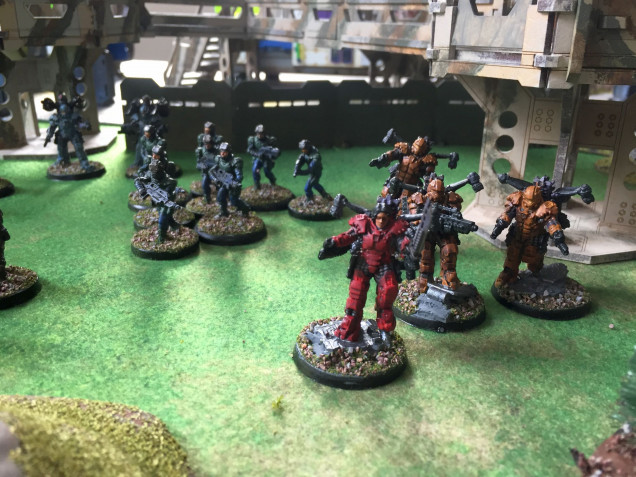
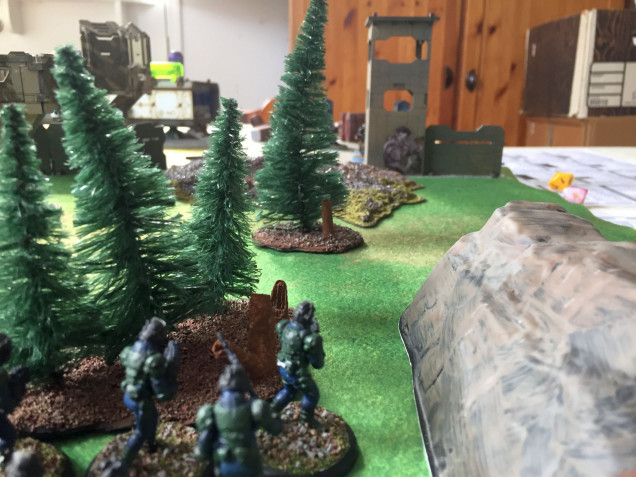
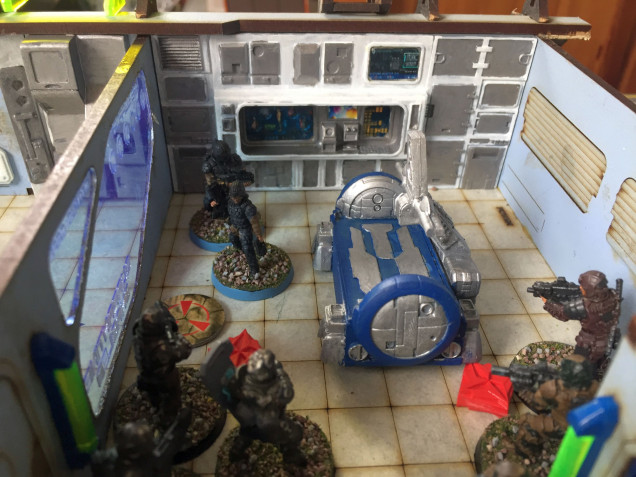

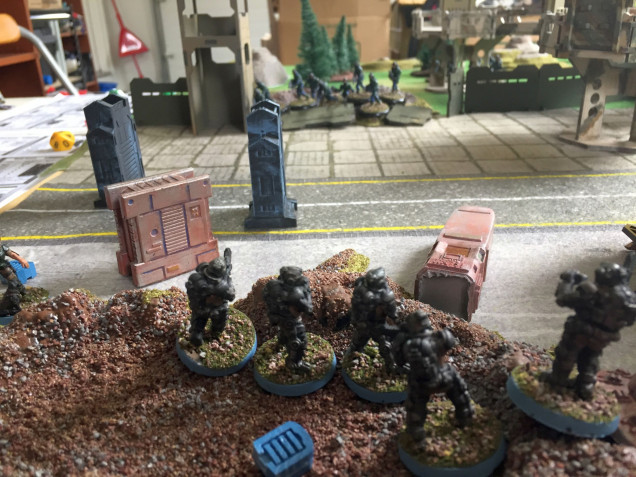
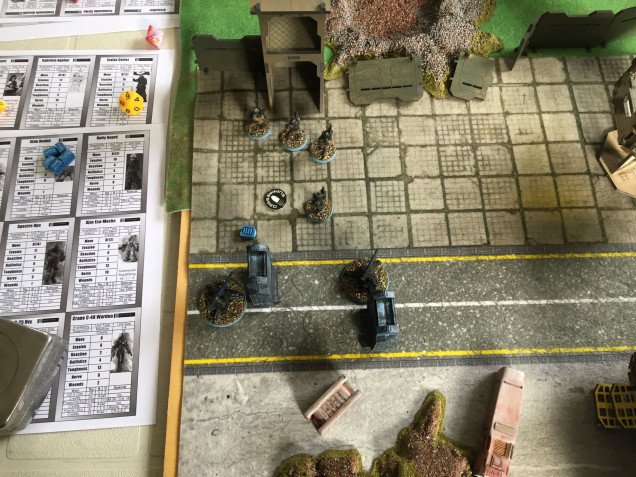

































Leave a Reply